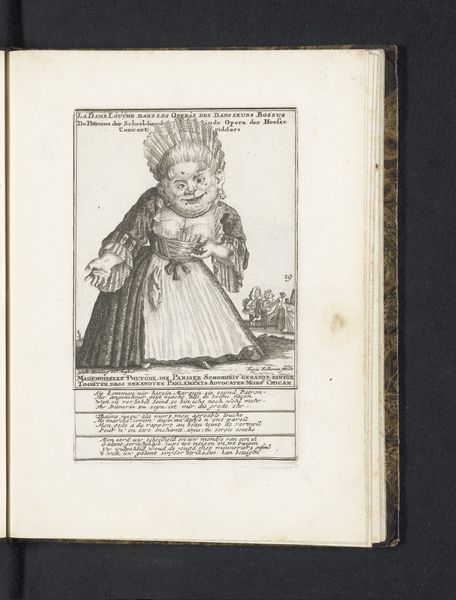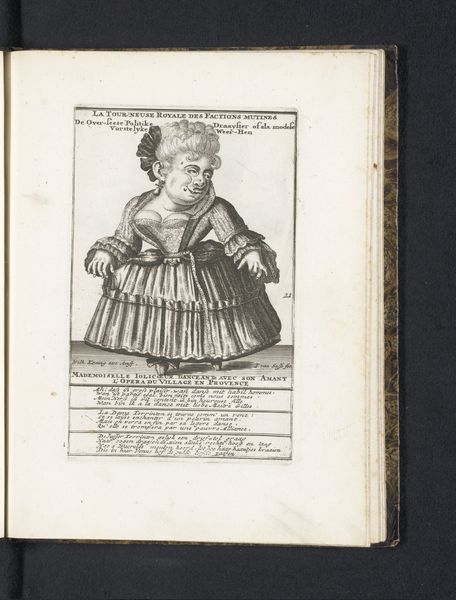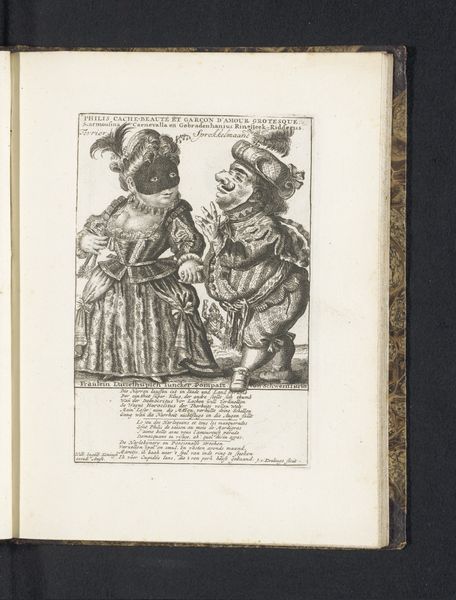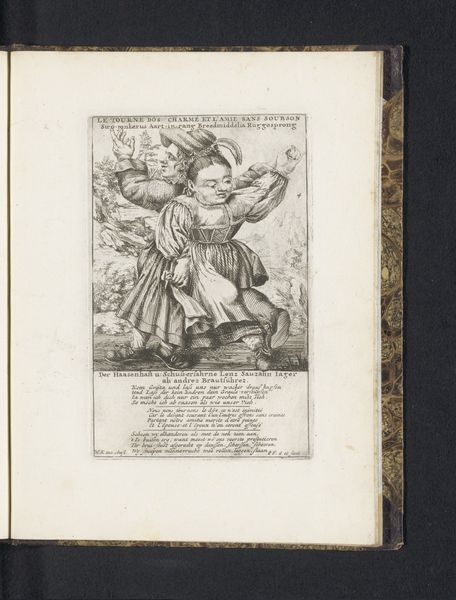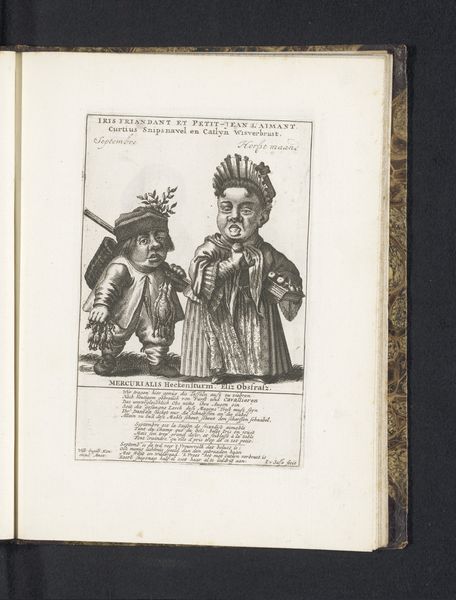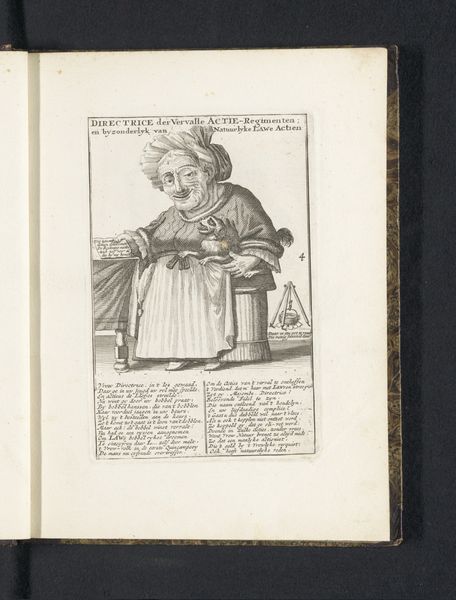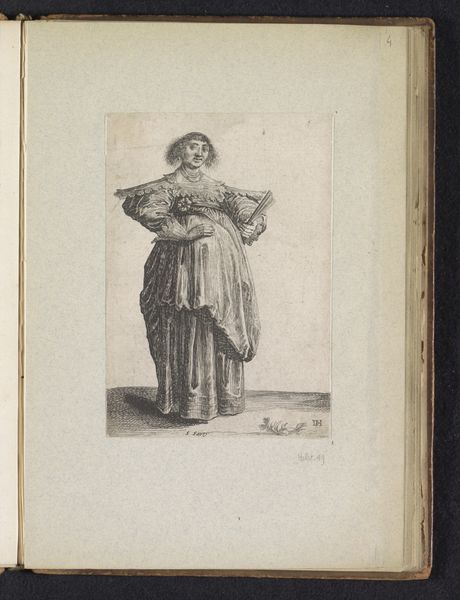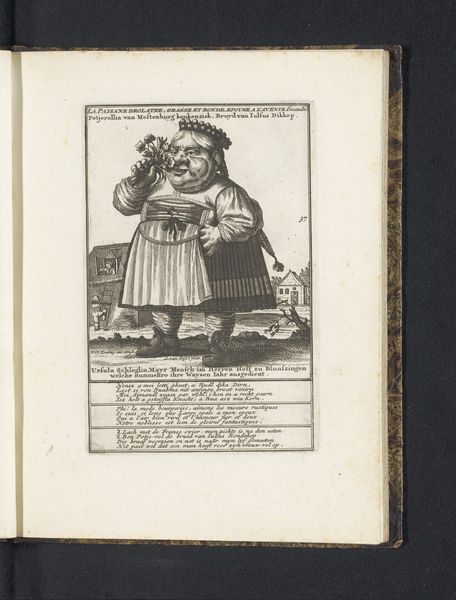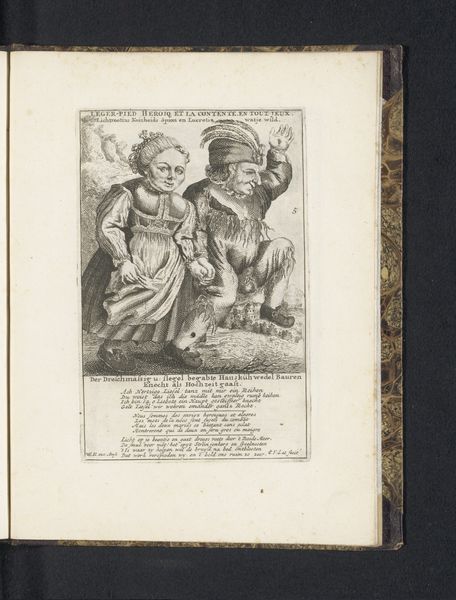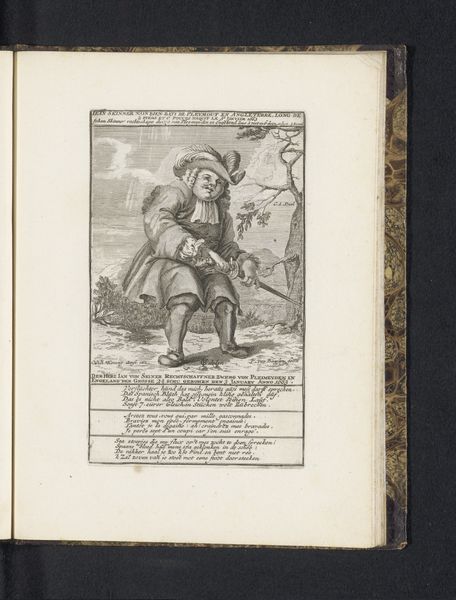
drawing, engraving
#
portrait
#
drawing
#
baroque
#
caricature
#
pen-ink sketch
#
engraving
Dimensions: height 169 mm, width 105 mm, height 227 mm, width 170 mm
Copyright: Rijks Museum: Open Domain
Curator: This pen and ink drawing, "De dwerg Laudate of Scherssende Herderin," dating from 1718 to 1720, is by Fopje Folkema. Editor: It’s… striking. The figure’s proportions are so exaggerated, and yet there’s a clear elegance to the line work. Is that satirical intent I detect in those meticulously rendered details? Curator: I'd suggest looking closer at its cultural milieu. Folkema operated in a society deeply stratified and obsessed with appearances. The deliberate "uglification," if you will, subverts notions of aristocratic beauty, providing commentary on societal vanity through her artistic choices. Editor: Yes, but consider the interplay of light and shadow, particularly how it shapes the folds of her dress. It draws the eye, almost forcing engagement with a form one might otherwise dismiss. The engraving medium itself plays a part, those precise lines lending the grotesque figure a certain formality. Curator: Formality perhaps used as a critical device to showcase and amplify the grotesque features, highlighting social inequalities by contrasting elevated styles with subjects of ridicule, which might involve considerations around consumer culture of this particular Dutch period and what types of art or illustrations were marketable to audiences. Editor: And within that framework, the gaze, those eyes… direct, knowing, almost complicit. We’re not just observing a caricature; there’s an acknowledgment there. Curator: This drawing’s satirical and mocking essence comes from how it functions in broader popular culture, which gives audiences a chance to actively engage with socio-political criticisms around gender. What it shows us about power dynamics in 18th-century society seems to stay relevant even now. Editor: Perhaps that’s the genius. By embracing the exaggerated, the distorted, it transcends mere historical documentation to offer a timeless commentary on human foibles. The artist is very particular with form, structure, and details—which still have a message today. Curator: An incisive rendering—the materials providing social context that speaks volumes about production, distribution, and cultural consumption back then. Editor: Absolutely, a powerful fusion of technique and observation, of material reality and formal structure, ultimately creating an undeniably thought-provoking work.
Comments
No comments
Be the first to comment and join the conversation on the ultimate creative platform.
